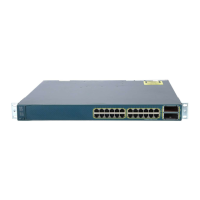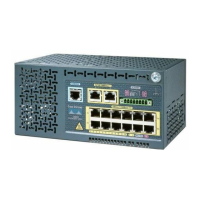3-10
Catalyst 3750 Switch Software Configuration Guide
78-16180-02
Chapter 3 Getting Started with CMS
Configuring CMS
Here are examples of how CMS can differ between Cisco IOS releases and switch platforms:
• The CMS versions in these software releases might appear to be similar but they are not the same as
this release. For example, the Topology view in this release is not the same as the Topology view or
the Cluster View in these earlier software releases.
–
Cisco IOS Release 12.0(5)WC2 or earlier
–
Cisco IOS Release 12.1(6)EA1 or earlier
–
Cisco IOS Release 12.2(18)SE or later
• CMS on the Catalyst 1900 and Catalyst 2820 switches is referred to as Switch Manager. Cluster
management options are not available on these switches. This is the earliest version of CMS.
Refer to the documentation specific to the switch and its Cisco IOS release for descriptions of the CMS
version.
HTTP Access to CMS
CMS uses the HTTP protocol (the default is port 80) and the default method of authentication (the enable
password) to communicate with the switch through any of its Ethernet ports and to allow switch
management from a standard web browser.
If you have not configured a specific (nondefault) HTTP port and are using the enable password (or no
password) for access to the switch, you can go to the “Displaying CMS” section on page 3-11.
Specifying an HTTP Port (Nondefault Configuration Only)
If you change the HTTP port, you must include the new port number when you enter the IP address in
the browser Location or Address field (for example, http://10.1.126.45:184 where 184 is the new
HTTP port number.) You should write down the port number to which you are connected. Use care when
changing the switch IP information.
Configuring an Authentication Method (Nondefault Configuration Only)
If you are not using the default method of authentication (the enable password), you need to configure
the HTTP server interface with the method of authentication used on the switch.
